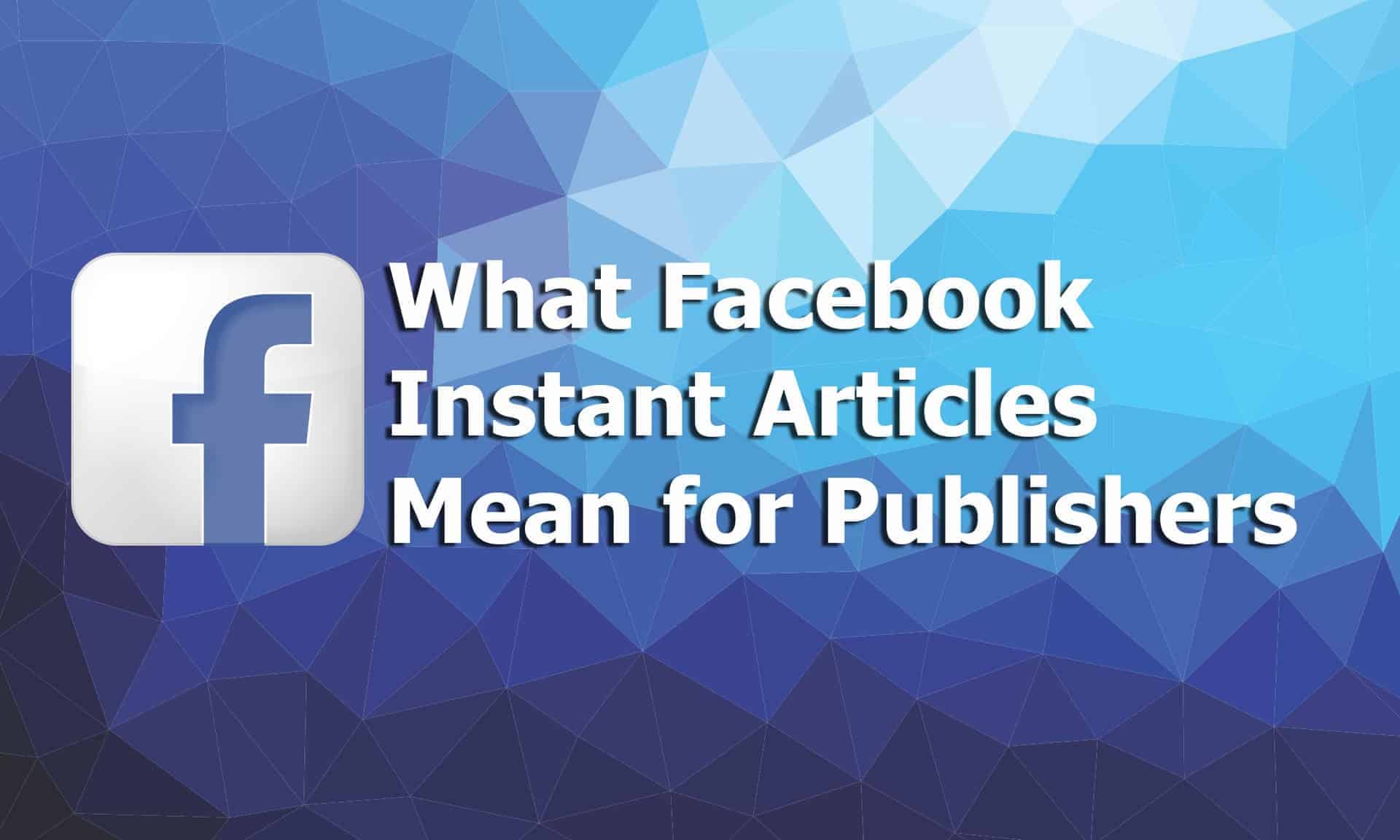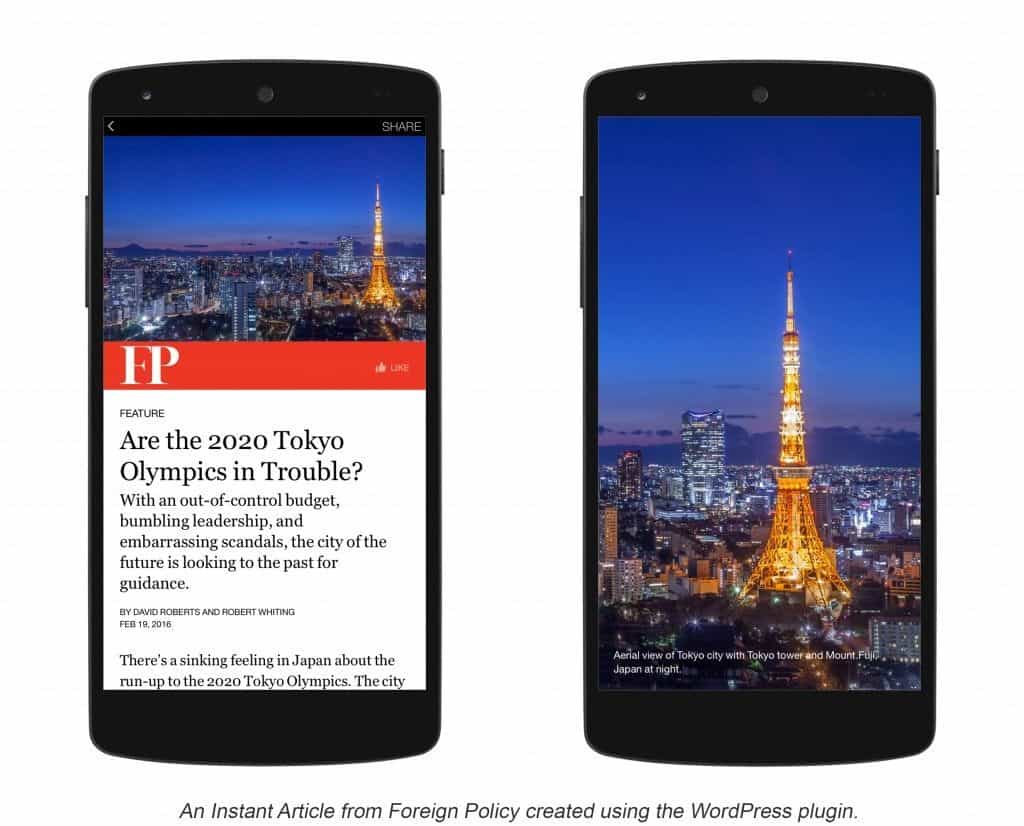
3 Reasons Facebook Instant Articles Are a Great Deal for Publishers


If you’re in content marketing or social media, you’ve probably heard of Facebook’s new Instant Articles, which are changing the way that publishers can display and promote their content on the social media site. In case you think this is just some passing trend, you should know that some big names are now publishing content on the platform. The nine publishers that first put their content on the platform ranged from the very old school (The New York Times) to the very, very new school (Buzzfeed). As of late last year, 18 publishers were allowed on the Facebook app, including The Washington Post, which is using the new tool for all of their content. If an established, old media outlet like the Post is jumping into this new social media publishing tool, that’s a good sign that there’s something special about the Facebook Instant articles. Read on to learn more about why this tool is so great for content creation and how publishers can make the most of it. Also, learn why you as a marketer might want to start improving your SEO content and looking for a content writing service.
Reach Viewers in a Much Better Way
Even before the introduction of Instant Articles, Facebook accounted for sizable chunks of large publisher’s web traffic. For the Times, between 14 and 16 percent of traffic comes from Facebook. The number is even larger for National Geographic, which gets roughly a quarter of web traffic via Facebook. This may have played a part into these media giants’ decision to partner with Facebook, but there are other reasons that publishers benefit from this new way of disseminating content.
The word “Instant” describes the speed of the new articles well. Previously, web articles took about 8 seconds to load when viewers clicked on a link to leave Facebook’s site. Though not long by most standards, 8 seconds is enough time to make viewers reconsider visiting a site to read a story. The Instant Articles take as fast as a tenth of that time. In the increasingly fast-paced modern world, this is a huge competitive advantage for publishers.
In addition to the faster loading times, Facebook Instant Articles are, well, gorgeous. Some of the features include high-res photos that viewers can easily zoom in on, embedded audio captions, interactive maps and more. As far as content creation, the Instant Articles offer great benefits for layout.

Benefit from Generous Ad Revenue
A long-standing debate in media circles has centered on how publishers of newspapers and magazines can keep making money in an era where people expect access to all news and information at no cost. One way publishers have combatted this is to gain revenue from advertising. In fact, most people who’ve worked at a small publication will know that advertising is often a publication’s main source of income, far surpassing any money from subscriptions.
The importance of advertising was not lost on Facebook when they planned the business model for Facebook Instant Articles. Publishers can opt to sell ads themselves on Instant Articles, keeping 100 percent of any revenue. However, an equally attractive option is to have Facebook sell the ads, using their highly advanced targeting and broad base of Facebook user data. If publishers choose this option, they still get to keep a hefty 70 percent of the revenue.
Facebook’s initial guidelines for publishing ads are below, but at least one change has been made to these. The frequency of ad posting has been lowered to every 350 words.
- One large banner ad, sized 320×250 or 300×250 pixels — or two small banners sized 320×50 or 300×50 pixels for every 500 words of content.
- A maximum of four total ads per article, and a maximum of two small banners per article.
- All articles are allowed to have at least one ad, regardless of the length.
- Publishers may include no more than one house ad per article.
- No ads may be placed “above the fold” on the first view of the article.
- Publishers may not include ads in autoplay videos embedded in their articles, although ads in third-party video players are allowed.
Extra Revenue from Native Advertising
As yet, Facebook is focusing on media outlets, not brands. While not so great for companies, this is excellent for publishers. Big names like BuzzFeed charge big bucks for sponsored native articles and may be able to continue gaining revenue from these native articles but at a higher return rate. Because publishers are the main focus of the platform, brands have no choice but to rely on publisher relationships and pay for either advertising space or sponsored articles.
What Does This Mean for Brands?
With the sophistication, reach and exclusivity of Facebook Instant Articles, many brands are likely salivating over the possibilities for promoting their SEO content. While publishers benefit from being able to promote their content in an arena where they don’t yet have to fight against brands for viewers, brands will likely need to find a way to form good relationships with publishers to up the chances of getting ads or sponsored articles published.
If it turns out that this option is too expensive, which it likely will be for all but the biggest brands, companies will need to focus on how they can continue with content creation and not lose blog readership to Facebook Instant Articles. When Facebook Instant Articles does open up to brands, whenever that may be, brands will need to be ready to provide content and a reader experience that can compete with publishers who are experts at the craft of storytelling. A content writing service can help brands create high quality SEO content that reads more like a newspaper article than a marketing piece.
Despite the many conflicting opinions on Facebook’s new Instant Articles, there’s no denying that this development is a huge change for the way media outlets operate and engage with their fans. It is also representative of how social media has drastically changed modern business. Brands will need to step up their content approach with the help of a content writing service even before they are allowed on Instant Articles, and publishers will be able to reap great benefits in terms of readership and advertising revenue. Facebook does allow other publishers to contact them in regards to becoming a partner. Interested publishers can visit this site for more information.
- The Google Quick Answer Box: What, Why and How? - December 20, 2023
- Top 10 Link-Building Strategies for Content Marketers - July 12, 2023
- 8 Types of Ecommerce Content You Should Start Using - May 15, 2023

